A female dog pregnancy is stressful for everybody, including the dam herself, her breeders, and other pets at home. A dog’s pregnancy lasts roughly 63 days, and generally, human intervention should be kept at a minimum.
Experienced breeders generally know about the common side effects of canine pregnancy. However, some pregnancies are unexpected and therefore the dog’s owner may be overwhelmed by the events unfolding: a moodier female, a growing belly, a loss of appetite, and so on. This article is a complete guide to dog pregnancies: signs of pregnancy, dog labor stages, dystocia and birthing problems, etc.
Anatomy of a Pregnant Dog
Female dogs have most of their reproductive system safely tucked within their body and protected by muscle and fat. Important parts of the bitch’s reproductive anatomy include the ovaries, uterus, fallopian tubes, cervix, vagina and vulva.
Eggs are produced in the ovaries. The bitch has two ovaries that are about ¾ of an inch long. They are deep inside the bitch and hang from the top of the abdomen. They are located near the kidneys. The ovaries produce the eggs. Around the ovaries is a fatty sac called bursa. The bursa funnels the eggs from the ovaries to the fallopian tubes or oviducts. The fallopian tubes are a segment of tissue that leads to the uterus. Fertilization occurs in the fallopian tubes.
Eggs then travel to the uterus. The uterus has three sections made up of a body and two horns. The uterus looks like a Y. The fertilized eggs will implant along the horns. The cervix is thick tissue that bridges the uterus and vagina. The cervix is shut except during the bitch’s estrus time and during whelping. The vagina is the segment in which the bladder connects with the reproductive tract. The vulva is the only part that is visible in the bitch. This thick tissue becomes swollen during the heat.

Canine Reproductive Cycle
Bitches reach sexual and reproductive maturity with their first heat. However, it is not advisable to breed at the first heat since complete physical maturation makes it more dangerous for the female and the pups. The age of the first heat varies with the breed and the individual genetics. In general, smaller breeds have the first heat earlier than the larger breeds. Some will have the first heat at six months while two years is not unheard of for large and giant breeds. On average, bitches have the first heat around six months of age and have two heats per year.
Read up on our article detailing what to do when your female dog is pregnant for the first time.
The reproductive cycle can be divided into four phases:
- proestrus,
- estrus,
- diestrus, and
- anestrus.
The heat, or season, as colloquially referred to is the joint period of both proestrus and estrus. The heat typically continues for two to three weeks (9 days of proestrus, and 9 days of estrus). The date in the cycle from the first appearance of bleeding and the engorgement of the vulva help breeders decide when to either offer the stud or inseminate. The majority of bitches are bred naturally. Most stud contracts provide for a double mating at days 9 and 11 (or 10 and 12) of the start of the female’s heat.
Some rare breeds or breeds like English Bulldogs and French Bulldogs can be expensive to breed. These breeds may require artificial insemination. The availability of healthy and viable semen may also be limited.
Proestrus
In the proestrus phase, the bitch exudes blood. The vulva will become swollen. The bitch often will lick the area and sometimes the blood may not even be obvious. The bitch will, though, produce chemicals called pheromones which males dogs are able to detect for long distances. In this phase, the bitch has not yet ovulated and mating during this phase will probably be too early for fertilization to occur.
Further, female dogs are not receptive to mating during this phase and may act aggressively to males that attempt to mount. Om the other hand, male dogs will be attracted to females during the proestrus stage of their cycle.
Estrus
In estrus, the second phase, the blood thins and becomes a light-colored or straw-colored liquid. The bitch will ovulate during this phase and pregnancy can only occur during the estrus phase.
The vulva will still be swollen. Bitches will be receptive to male dogs. Bitches with tails will set them to one side and allow a male dog to mount. A male dog will mount and ejaculate the sperm. After ejaculation, the dog’s swollen penis will tie with the bitch’s vagina. The two dog will be stuck together back to back for a period of time. Although the tie commonly occurs during mating, it does not always happen. Pregnancy can occur without a tie. Also, a bitch can be impregnated by more than one dog. Ovulation occurs in this phase about nine days from the beginning of heat. Sperm is vital for approximately 5-6 days and the egg for 2-3.
Most experienced professional dog breeders want to pinpoint the time of ovulation with more exactitude. A veterinarian can draw blood and have the levels of progesterone measured. Progesterone is a hormone that is not species-specific. Any lab including human ones can readily test the levels. The first blood draw should be taken about five days into the heat. During proestrus, the level of progesterone will be 1.0 ng/ml. The amount of progesterone will continue to rise as ovulation draws near. A measure of 5.0 ng/ml indicates ovulation. An analysis of vaginal cells and levels of luteinizing hormone, also, are used to enhance the chances of a successful mating or insemination. Luteinizing hormone is species-specific and must be tested in a veterinary lab. A surge in the amount of LH indicates that ovulation will occur in forty-eight hours.
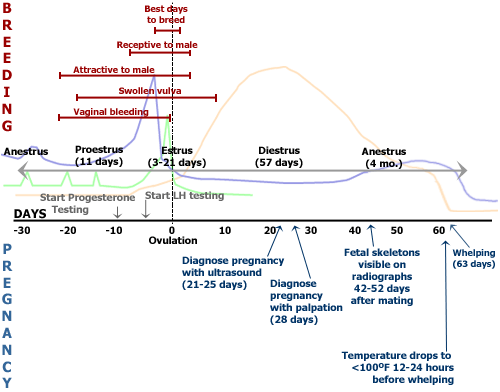
Signs and Stages of Dog Pregnancy
A normal pregnancy lasts for 63 days starting with the date of ovulation. Pregnancy in dogs is divided into three stages of 21 days each. Puppies may be whelped seven days before or after the due date. Puppies not whelped during this period of time may suffer birth complications including death. A bitch that has received all the proper care before pregnancy is likely to have an easier time.
Pre-pregnancy preparation includes a diet with ample nutrients, a normal weight, and regular veterinary care. All vaccinations should be up-to-date. The immunities against disease will get passed on in part to the puppies.
Weeks 1-3 — Early Pregnancy
Early pregnancy can be difficult to detect. A large number of dams will not show any obvious signs. Some commentators say that looking at the dam’s nipples is a good test. They observe that the nipples start having a pink hue in early pregnancy. The dam can be more subdued during this time. She may eat a bit more but no effort should be made to fatten her up. Sometimes a mucous discharge can be observed. The amount of the discharge is oftentimes so scant or so lost in the fur of the dam that it will be missed even by a breeder looking for it.
Implantation of the embryonic puppy in the uterus occurs about 19 days after conception. Veterinarians may be able to palpate the uterus for the existence of puppies at the end of this period. It is important not to attempt to palpate without some skill. Too much pressure applied to the uterus can cause damage to the developing puppies and possibly a miscarriage.
Weeks 4-6 — Visible Growth
The dam will be more observably pregnant. In this period she will start putting on weight and the belly will start expanding. Some dams do get morning sickness or pregnancy nausea for a few days during this period usually in week four. The dam may vomit and have a loss of appetite. Bitches may be fed puppy food to help increase calories and boost nutrition.
An ultrasound can confirm the pregnancy and give some idea of puppy count in as early as the twenty-fifth day. An ultrasound scan examination is a non-invasive and non-painful test that produces a visualization of the developing fetuses using sound waves. There are no harmful side effects to the dam or the puppies. Many veterinarian offices have this technology in-house. It is relatively inexpensive. Some breeders will have the dam checked for relaxin. High levels of this hormone are a positive test of pregnancy. A blood test for relaxin can be performed as early as the 22-25th day of pregnancy.
Weeks 7-9 — Prenatal Stage
The dam’s abdomen continues to expand. She will eat more and should absolutely be offered an increase in food intake (bigger meals, or more frequent meals). The nipples may start to drip the lightly colored colostrum milk that will be so important in conveying the immunity antibodies to the newborn puppies. The dam close to the whelping date will often pick a nesting spot. The dam may drag clothes to her own chosen location.
An x-ray can’t be used until late in the pregnancy. The fetal puppies do not develop a bony skeleton until after day 45. An x-ray will reveal the number of puppies and, occasionally, a problem of the size of the puppies and the bony structure of the pelvis. It is a cheap way to get a puppy count if not done previously. The over-exposure to the dam and the puppy’s of radiation makes it a good idea to avoid multiple x-rays if at all possible.
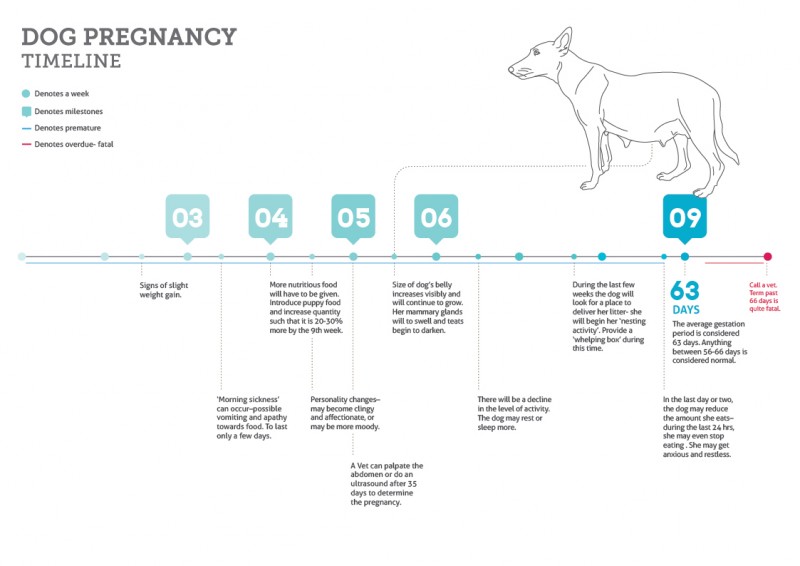
Prenatal Care, Diet & Supplements For Pregnant Dogs
The beginning of the pregnancy is easy to cope with for the dam: not much is changing. In the final few weeks, the fetuses are sucking up all of the mother’s nutrients and energy. She requires monitoring just to make sure she eats and moves enough. Her bigger belly may force her to live a more sedentary life but she still needs to move a little, without brutal movements.
A pregnant female approaching labor should be given the same usual food, just in increased amount or frequency. Indeed, you do not want her to be suffering from a new food upsetting her stomach, or causing dehydration due to diarrhea for example.
Diet for Pregnant Dogs
A dam should be kept on her regular diet for the first four weeks of the pregnancy. Some people make the mistake of upping the caloric content soon after mating. Dams in the first four weeks can experience appetite loss and even some vomiting due to pregnancy changes. The dam’s body isn’t quite ready for the excess calories. Excess calories that become excess fat can make delivery of the puppies more challenging. Obesity may prevent a veterinarian from being able to palpate to confirm the pregnancy. Obesity, also, increases the risk of complications if surgical delivery becomes necessary.
Those breeders who feed their dogs a raw diet may continue to do so. A diet that includes approximately 10-20 percent organ meat (e.g. heart, liver) ensures that the dam gets an adequate amount of vitamin A. Meats higher in fat content such as beef, duck, venison, and lamb should be added from week four of the pregnancy. Bones should be eliminated in week 6 because excess dietary calcium has been linked to the development of eclampsia.
Some commentators encourage the addition of two fatty acids during pregnancy:
- EPA (eicosapentaenoic acid), and
- DHA (omega-3 docosahexaenoic acid).
These two essential fatty acids help in the neurological development of the puppies. In supplements, EPA and DHA are combined in equal measures. Veterinarians disagree about whether to supplement or not. Those who support supplements argue that these fatty acids do not hurt the dam and could in fact even help her puppies. Detractors maintain it is not really known if an excess of these fatty acids hurt the developing puppies. This group, in general, hold that any non-essential supplementation or medication should not be given to a pregnant dog, especially close to labor.
More food should be given the dam beginning in week five. A breeder’s veterinarian may advise a prenatal vitamin. Some vitamin deficiencies like folic acid deficiency, are associated with birth defects. Folic acid is a water-soluble vitamin. Any excess folic acid is simply excreted in the urine and not stored.
Many experienced breeders worry that the dam will develop eclampsia after birth. Eclampsia strikes dams shortly after whelping. It is characterized by extremely high blood pressure.. If left untreated, the dam is likely to go into convulsions and die. Blood tests on dogs with eclampsia have shown the dogs to be deficient in magnesium, calcium, and glucose. In order to prevent eclampsia, misguided dog breeders may try to increase the calcium in the dam’s diet during pregnancy. This kind of supplementation does not work and, in fact, can be dangerous for the developing puppies. Excess calcium and Vitamin D have been shown to cause birth defects.
One way to increase the calories in the dam’s diet is to switch from regular kibble to puppy food. Puppy food has more calories and is produced with added vitamins and minerals. Puppy food, though, should be switched back to adult food during the last two weeks of the pregnancy. Calories should be increased by 30-50% with a target weight gain of 15-30%. Servings of food should be broken down into several meals a day. The growing uterus of the dam pushing on the stomach can make eating large meals uncomfortable. Dry food should have 30% protein and 20% fat.
A diet higher in fat and protein will mean that the dam’s liver and kidneys will have more work in breaking down food for the body’s use. In this kind of diet, it is vital that the dam have access to drinking water around the clock. More water is necessary in order to assist the kidneys in flushing out the by-products of the metabolizing of fat and protein. Dams are at higher risk for dehydration especially if pregnancy hormones have caused some vomiting. Invest in a dog water fountain to entice the dam to drink more often.
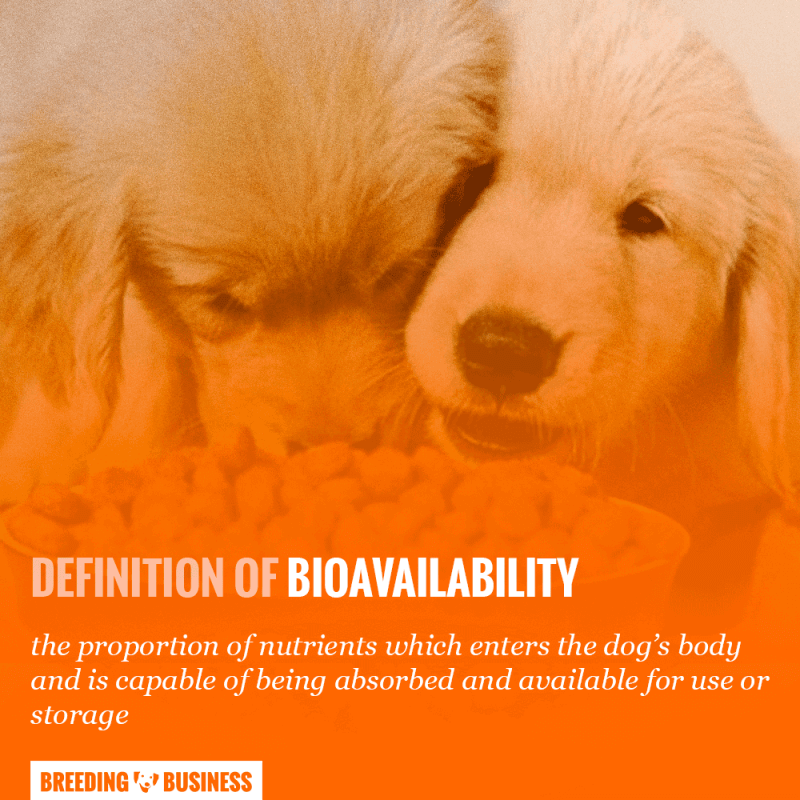
Supplementation of Pregnant Dams
Some loss of appetite can be expected at various points during pregnancy. Dogs may be off of their feed when pregnancy hormones are causing some nausea, or near the onset of labor. It is very common at these times for the dam not to eat as much. However, if appetite does not return during the final weeks of pregnancy a veterinarian may advise some supplementation to her diet.
Dams need to consume sufficient calories to support their developing puppies. A failure to eat sufficiently will produce undersized puppies with a poor start in life. Also, the failure of a dam to eat may result in vitamin and mineral deficiencies that could even jeopardize the well-being and life of the puppies.
Veterinarians will prescribe supplements for pregnant dogs to address these nutritional concerns. There is a wide variety of supplements designed for dams on the market. Unless a breeder has several years of experience, it is wiser to consult with a veterinarian before adding any medications or supplements to a pregnant dog’s diet.
Some common supplements can be harmful or even toxic in large amounts. For example, Vitamin D is an essential vitamin that helps promote healthy bones in developing puppies. However, it is a fat-soluble vitamin. Fat-soluble means that any excess Vitamin D not immediately used by the dam’s body will be stored. Over time this storage of excess can result in a toxic level of Vitamin D in the dog’s body.
The other type of vitamins, water-soluble, are not stored. Any vitamin not immediately used by the dam’s body is secreted by the kidneys in the urine. All the B-vitamins including folic acid are water-soluble ones.
Some popular supplements include prenatal vitamins and supplements designed to add calories when a loss of appetite prevents a dam from adding sufficient calories via normal food intake. Again, unless a breeder has a great deal of experience, it is a good idea to run a supplement passed the veterinarian prior to giving it to a dam.
Remember that excessive or prolonged vomiting or morning sickness which is occasionally seen in pregnant women, i.e. hyperemesis gravidarum, does not occur in dogs. Any vomiting which occurs in a dog that is excessive or happens outside of week four or five of pregnancy is caused by another health problem. Any illness which causes several days of vomiting will need to be urgently treated by a veterinarian. Dehydration in a pregnant dog can result in fetal death (stillbirth) and miscarriage. Veterinarians may need to give a pregnant dog IV fluids while sorting out the cause of the vomiting and rendering treatment.
Labor in a Pregnant Female Dog
A dog breeder should have the whelping box and whelping kit fully stocked up and ready by the 50th day of the female dog’s pregnancy. Human intervention(s) should be kept at a minimum but human monitoring should be constant. In other words, do not try to be overly helpful but make sure you observe any change(s) in the pregnant dam throughout her pregnancy and even more during labor.
Cesarean Sections
First of all, a breeder should prepare for the eventuality that a surgical delivery may be necessary for the dam. In a few breeds, the chance of a cesarean delivery exceeds the chance of a normal whelping. Any breeder with a brachycephalic breed (e.g. Bulldog, Boston Terrier, French Bulldog) should make arrangements for a planned c-section.
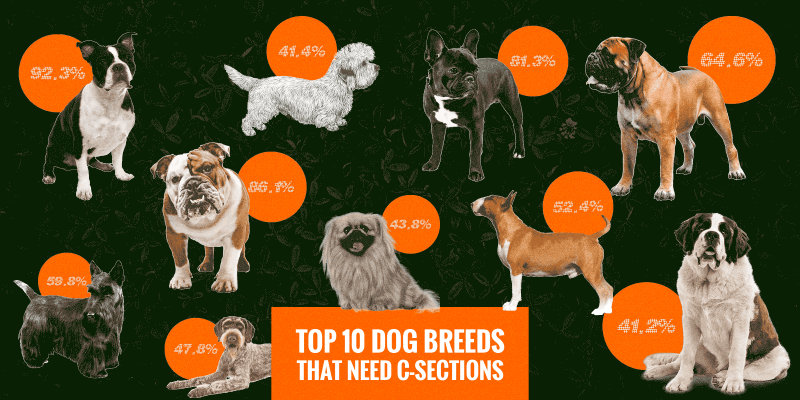
The attempt to try to save the cost of a surgical delivery in these breeds simply isn’t worth it. The death of puppies and the dam can happen especially if emergency veterinary care is not immediately available. Other breeds especially many toy breeds have high rates of surgical deliveries.
Arrangements should be made at least two weeks ahead of the expected whelping date for surgical delivery to be scheduled. In some situations, a veterinarian may wait until the onset of natural labor (especially in a first-time dam) or may allow a trial natural labor and delivery if emergency facilities are not a long distance away. Some veterinarians will want some dogs checked into the veterinary clinic a day or so before a scheduled c-section.
Preparation for Labor
In all cases, a person waiting for a litter to be delivered should know how the veterinarian wants to proceed in cases that may involve after-hour emergencies. Some veterinary clinics refer to specific animal emergency hospitals for after-hour deliveries and emergencies. It is best to know these contacts and maybe get in touch a couple of weeks in advance. It is always stressful to work with the same veterinarian for years and years and throughout the pregnancy, only to have to turn to Google and a list of strangers when the special day finally unfolds.
For the vast majority of dogs, thankfully, the dam will be able to handle the whole event herself while the nervous breeder paces the floor. It is smart to have a few supplies purchased in advance including hemostat, rounded-point scissors, a package of unwaxed dental floss, syringe, a digital rectal thermometer, lubricant, a postal scale, a can of goat’s milk, surgical gloves, flashlight.
[adwithin]
The whelping box should be bought or built by the final three weeks of pregnancy. The dam should be allowed to get a chance to get comfortable in it. If she wants to add some of her own “nesting” materials, like old clothes, let her do so. She should not be forced into the box or she may just decide to give birth on a bed just because she can. The whelping box should be big enough for her to be able to turn around, but not so big that she rejects it as an unsafe place to have her pups. She should feel secure in it. A typical feature of a whelping box is the “pig rail” or guardrail around the edge of the box. This rail prevents the dam from accidentally reclining on her own puppies and smothering them.
The whelping box needs to be in a warm room with no air stream and drops in temperature. Drafts, of course, are bad for puppies and the box should be positioned in a place that does not have them. Puppies have very little ability to keep themselves warm. A whelping box outdoors will probably need some alternative heating source like heating pads. Ideally, a dam and pups will be in an indoor kennel or home. A room in which the temperature can be kept at around 80 degrees Fahrenheit is safe for newborn puppies.
Stages of Labor and Delivery in Dogs
Pregnancy lasts an average of 63 days. Puppies born at least at the 58th day have a high chance of a healthy birth. Similarly, puppies whelped at the 69th are within the normal variance.
Breeders who want to get a better idea of when labor will start may take the rectal temperature of the dam twice a day beginning on day 55 or 56 using a dog thermometer. Normally, the dam will have a temperature of 100-101 degrees Fahrenheit. A drop below 100 degrees generally means that labor will start within the next 24 hours.
Soft Contractions
In the first stage of labor, the contractions may not be visible. This phase lasts between six and eighteen hours. The dam may be restless, not eat, and display nesting behavior. The dam may pant and be obviously uncomfortable. During this time, the cervix is dilating and thinned in order for the puppies to pass through during the second phase, active labor.
Active Labor
Active labor is when the puppies are whelped. This phase can go on for as long as twenty-four hours. The dam will have strong visible contractions. She may squat or lay down. A light colored liquid fluid may be expelled. The excessive fluid that is bright red or full of pus is a sign of infection.
The first puppy takes the longest to deliver. The puppy will look like a purple blob enveloped in its amniotic sac. The dam normally will lick the sac, sever and eat the umbilical cord. She will vigorously lick the puppy. If she does not break the sac, an intervention will be necessary. A massage with a towel should be enough to free the puppy and get it breathing.
Each puppy has a placenta which in uterus provided its nourishment from the dam. Dams will eat the placentas (a source of the hormone oxytocin) or they may be removed. Puppies should emerge every twenty to thirty minutes. It is normal for dams to take a couple hours break between puppies especially if there are many puppies to deliver. Dams that have whelped prior litters will generally have shorter labors that those having a first litter.
Passage of Placentas
In the final phase, the remaining placentas are expelled. It is important that all placentas are expelled. A retained placenta can be the source of serious infection. Therefore, take notes of the expected puppy count and tick each one off as soon as a puppy is born and its placenta expelled.
Do not panic if you are missing one placenta or two, the female might have eaten it without you noticing this happening.
Common Dog Pregnancy Problems
Most canine pregnancies unfold without any issue, ever. Yet, as a dog breeder, you must be prepared and equipped with enough knowledge to diagnose a problem when you see one. That way, you can take action fast and make sure it gets sorted without much damage.
A general term for pregnancy issues and birthing problems is dystocia.

No active labor at the expected time
While there is some permissible variance in when actual labor begins, a labor that does not begin by the 70th day of pregnancy warrants an urgent assessment by a qualified veterinarian. Sometimes, a pregnancy is confirmed but then for no apparent reason the puppies are reabsorbed and none are whelped. Sometimes, puppies may die in utero and their continued presence in the uterus can become the source of a dangerous infection.
Uterine insufficiency
Also, some dams are unable to produce contractions strong enough to whelp her litter. This condition is called uterine insufficiency. Approximately sixty percent of dystocia originate with the dam, while the other forty percent originate with a puppy’s position or size. The solution usually is a surgical delivery.
A primary dystocia is one in which the puppies have an unobstructed entry to the world but the dam’s uterus lacks the muscle to whelp them. If no puppies have been born in this first-time litter, the dam may have some genetic flaw that prevents delivery of her pups. If this dam has the same problem with a different sire, it is probably best to retire this bitch from the breeding program.
Missing or unborn puppies
There could have been an error in the puppy count. In some litters especially large ones a puppy may not be readily observable on x-ray because larger puppies partially conceal it. Puppies that may have been observable on ultrasound on day 30 may disappear by the time of whelping. Puppies that have some deformity or die in utero can be absorbed in the uterus and leave no trace of their former existence.
Long delay between expulsions of two puppies
A delay of more than two hours in between the expulsion of puppies needs to be checked out. The delay can be due to the puppy’s position in the birth canal or weak contractions that can’t continue the whelping process.
If a dam has strained for four hours and no puppy has been expelled, it may be because the puppy is positioned in a way that it can not fit through the birth canal or is too large for the birth canal. Some dams may not have effectively strong contractions to expel puppies.
A veterinarian can help increase the strength of contractions by administering calcium or oxytocin. If these interventions do not restart labor, it will be necessary to do a surgical delivery.
Blocked puppies
Puppies can block the birth canal either because of their overly-large size or because they situated in a transverse birth position that prevents their passage. Generally, puppies can be delivered from either a head-first or breech position.
A deceased puppy may not stimulate strong contractions and block the remaining of its living siblings. Occasionally, the pup will be half in and half inside the dam. A gentle tug on the pup may be all that is necessary to free the pup and end the blockage. It is important to remember that the pups are fragile and too much force may seriously injure the pup.
Female eating afterbirths
Dams clean their whelping box by eating afterbirths, puppy urine, and feces. It is perfectly normal for the dam to eat the afterbirths and she should be left alone to do so. Dams, especially in their first litters, can sometimes take a bite out of their own offspring. It is important in a first litter to pay close attention to the dam while interfering as little as possible.
Lactation failure
A female dog’s first milk called the colostrum is very important for newborn puppies. It contains important antibodies that later milk does not have. Colostrum helps puppies combat disease and grants them some immunity. If at all possible, puppies should be encouraged to nurse in those first crucial 48-72 hours. If the dam does not show interest in nursing pups, the pups can be gently placed on a teat.
Problems like mastitis, the infection of the mammary glands, can be a very serious. Symptoms include teats being red, swollen, and hot. Antibiotics are given to treat the infection. In severe cases, the dam may have to have a mastectomy. Sometimes the mastitis can be resolved and the pups resume nursing. Puppies are likely to require bottle-feeding or tube-feeding for very small whelps.
Loss of appetite and tiredness
Dams frequently have a precipitous loss of appetite before whelping. This is nature’s way of making sure that the dam’s stomach contents are empty at a time when pain and pressure would make vomiting a distinctive possibility.
The whelping process requires tremendous energy from the dam. A first litter may take up to 24 hours to whelp and the dam will likely to be extremely tired after this taxing event on her body. Milk production requires even greater calories and an underfed dam will become particularly tired with the demands of nursing puppies.
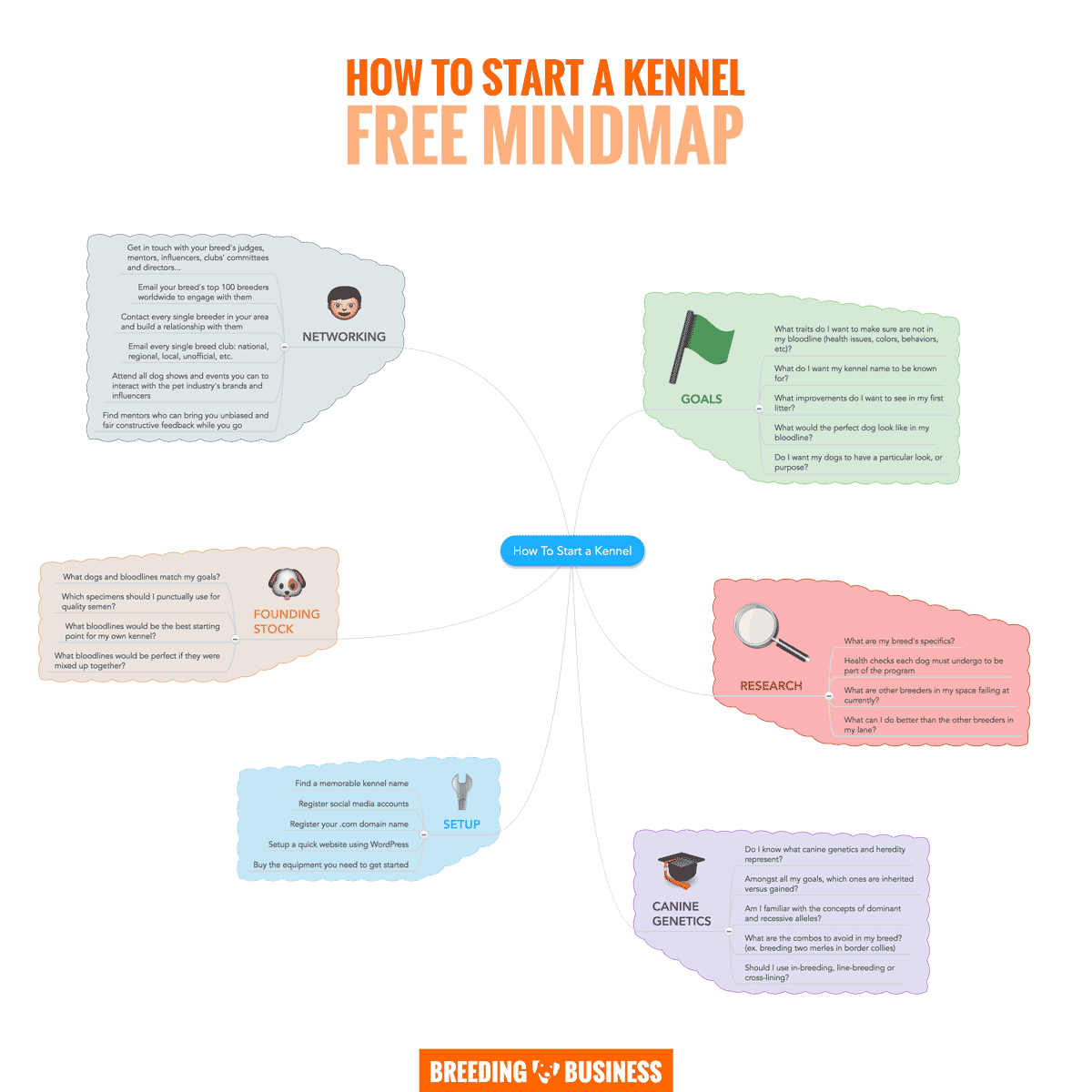
Safety Precautions
Creating a secure environment for the bitch and her puppies during whelping is paramount. The whelping box should be prepared well in advance, ideally by the 50th day of the pregnancy. It should be positioned in a warm, draft-free room to maintain an ambient temperature of around 80 degrees Fahrenheit to keep the newborn puppies comfortable. The box should have a pig rail to prevent accidental smothering of the pups.
During the first and second stages of labor, monitoring the dam while minimizing human intervention is essential. Some breeds, particularly brachycephalic ones, may require planned cesarean sections, so arrangements should be made with a veterinarian in advance. In case of any complications during labor, such as a prolonged delay between puppy expulsions or blocked puppies, prompt veterinary intervention is crucial to ensure the safety of both the dam and her offspring.
Caring for the dam
Post-pregnancy care for the dam is essential to ensure her health and the well-being of the newborn puppies. After whelping, the dam will likely be exhausted from the physically taxing labor, which can last up to 24 hours, especially for first-time mothers. She should be given ample time to rest and recover. Lactation is another demanding phase; the colostrum, the first milk, is crucial for the puppies’ health. If the dam shows any reluctance to nurse, gentle encouragement can be provided. It’s important to monitor her for any signs of mastitis, a mammary gland infection that can be serious, and administer antibiotics if necessary. Overall, a comfortable and quiet environment, a well-balanced diet, and close observation are key elements of post-pregnancy care for the dam.
Frequently Asked Questions
Managing and monitoring a dog’s pregnancy is stressful so we have gathered some frequently asked questions and answered them as accurately as possible below. If you have further questions, leave us a comment below.
Are there pregnancy tests for dogs?
There are no pregnancy tests for dogs like those for women. First thing, pregnancy tests designed for people have no utility for canines. Women produce a single pregnancy-specific hormone (i.e. human chorionic gonadotropin). Veterinarians can draw blood from the bitch and measure the hormone levels called relaxin at about 22-27 days after mating. This hormone only results with the implantation of the fertilized egg and its developing placenta. If the test is performed too early in the pregnancy, it will be falsely negative. Any positive means that pregnancy has occurred. It is not produced for a false pregnancy.
How long does dog gestation last?
The average gestation is measured from the date of ovulation and lasts sixty-three days. The actual date of ovulation is very rarely known. Normal gestations can range anywhere within seven days before or after with no ill-effects to the puppies. The pregnancy calendar can be expressed as nine weeks or as three trimesters of 21 days each.
What is pseudopregnancy in dogs?
Pseudopregnancy or false pregnancy in dogs is a fairly commonly occurring phenomenon. About a month after heat has ended the bitch will take on the appearances of pregnancy including weight gain, nipple prominence and even engage in nesting behavior. It is thought to be caused by a hormonal imbalance and will generally resolve on its own even if it is not treated. It does have a tendency to recur, though.
How often can dogs get pregnant?
Dogs can get pregnant at every heat. However, it would not be healthy for dam’s body and her puppies for back-to-back pregnancies to occur. Pregnancy puts a strain on the dam. If she is not given sufficient time to recover, her own body’s nutritional resources can be taxed leading to poor nursing and sickly pups.
Some breeders maintain that back-to-back breeding helps to get the breeding accomplished at a younger age and then retire the bitch. Bitches do not enter a phase of life in which they cease to be fertile; there is no menopause in female dogs. Sexually, back-to-back breedings are healthier, but if you consider the female’s entire body and health, it is too draining.
Can you worm pregnant dogs?
Bitches should be up-to-date on all vaccinations prior to mating. They should be dewormed, too. During pregnancy, the dam should be dewormed with one of the safer dewormers after day forty. Fenbendazole (the active chemical in Panacur) is a common choice. The stress of pregnancy can reactive the growth of worms. Deworming prior to whelping will help decrease the parasitic load on the puppies.
Can pregnant dogs eat raw food?
Dams can continue to eat a raw food diet during pregnancy. It is, though, not a good time to initiate any radical changes in the diet. The nutritional buildup of the dog’s body must start before mating and not just during pregnancy. The dam will have periods of loss of appetite at various points in the pregnancy with the fluctuation of hormones. New foods introduced during pregnancy may only defeat the purpose and increase the stomach upset.
When can dogs get pregnant while in heat?
Bitches can only get pregnant during the estrus phase of their heat cycle. On average ovulation occurs at on day eleven from the time heat starts (proestrus). Conception can occur on the ninth through the thirteenth day.
Lastly, this guide would not be complete with a helpful video on dog pregnancies.
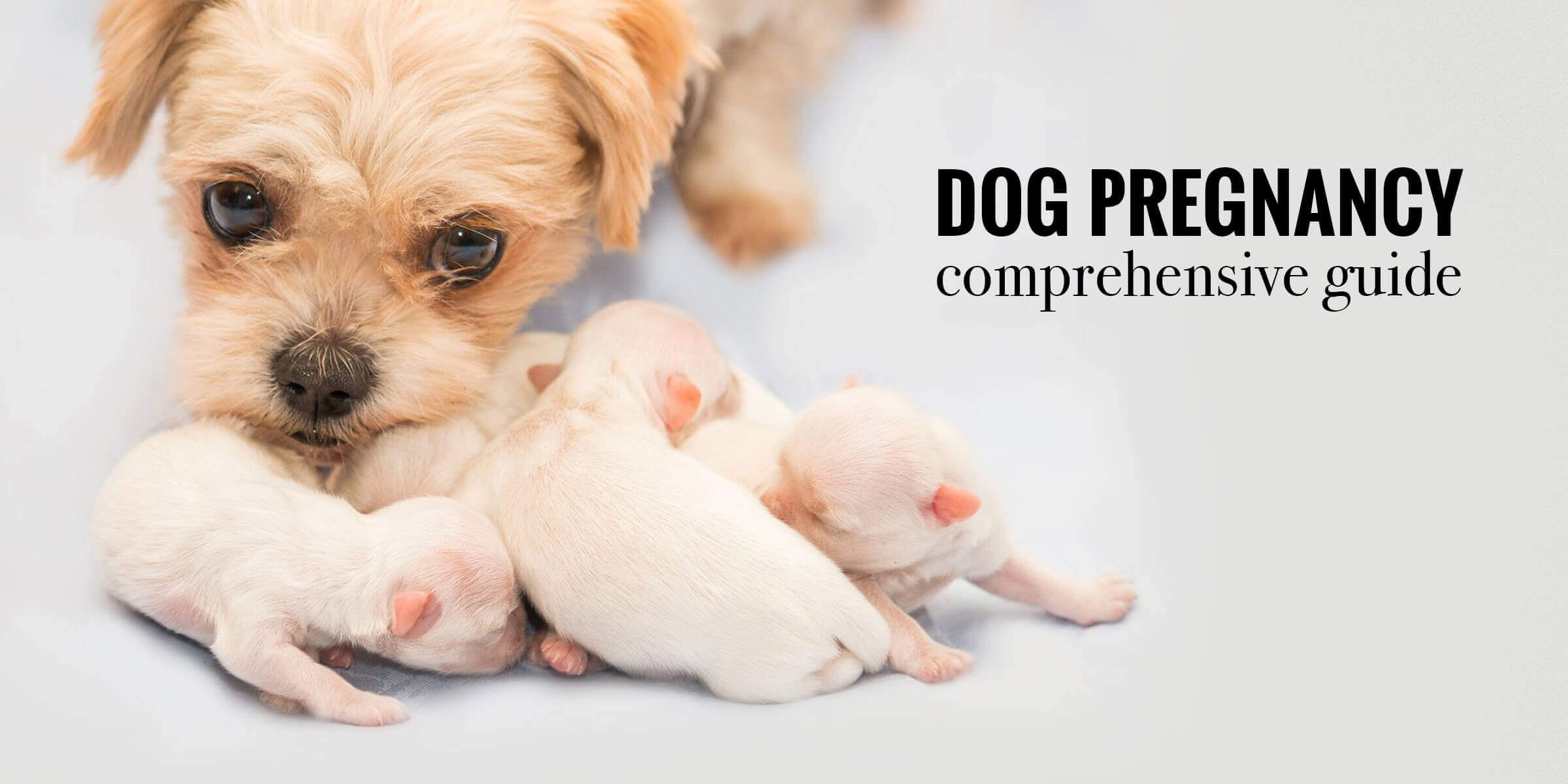
One comment on “Dog Pregnancy — Signs, Stages, Labor, Risks, Dystocia & FAQ”
How long until second round of being in heat is from the first time? Once every 6 months?